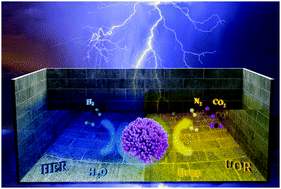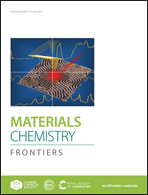The novel dual-category active sites of NiCoP/CoP as high-performance electrocatalyst for urea electrolysis and synergistic hydrogen production†
Abstract
Combining the urea oxidation reaction (UOR) instead of the oxygen evolution reaction (OER) with the hydrogen evolution reaction (HER) is a promising method to generate H2 with low-energy absorption and alleviate the environmental impact of urea wastewater. The unique “Fistular onion flower” NiCoP/CoP was synthesized at different temperatures, denoted as CNCP-T (T indicates the temperature, T = 200, 300, 350, and 400 °C). Significantly, NiCoP/CoP overcomes the limitation of a single type of active site for the catalyst, and the combination of CoP and NiCoP could provide two different types of active sites for applications in UOR. The dual-category active sites of CNCP-350 demonstrate highly efficient bifunctional catalytic activity in the UOR and HER. Particularly, in the urea electrolyzer (HER‖UOR), CNCP-350‖CNCP-350 exhibits a low cell voltage of 1.355 V at 10 mA cm−2. In this work, we achieve efficient UOR to assist in hydrogen production by implementing a synergistic strategy of dual-category active sites and demonstrate its potential feasibility for practical applications in efficient hydrogen production technology.



 Please wait while we load your content...
Please wait while we load your content...